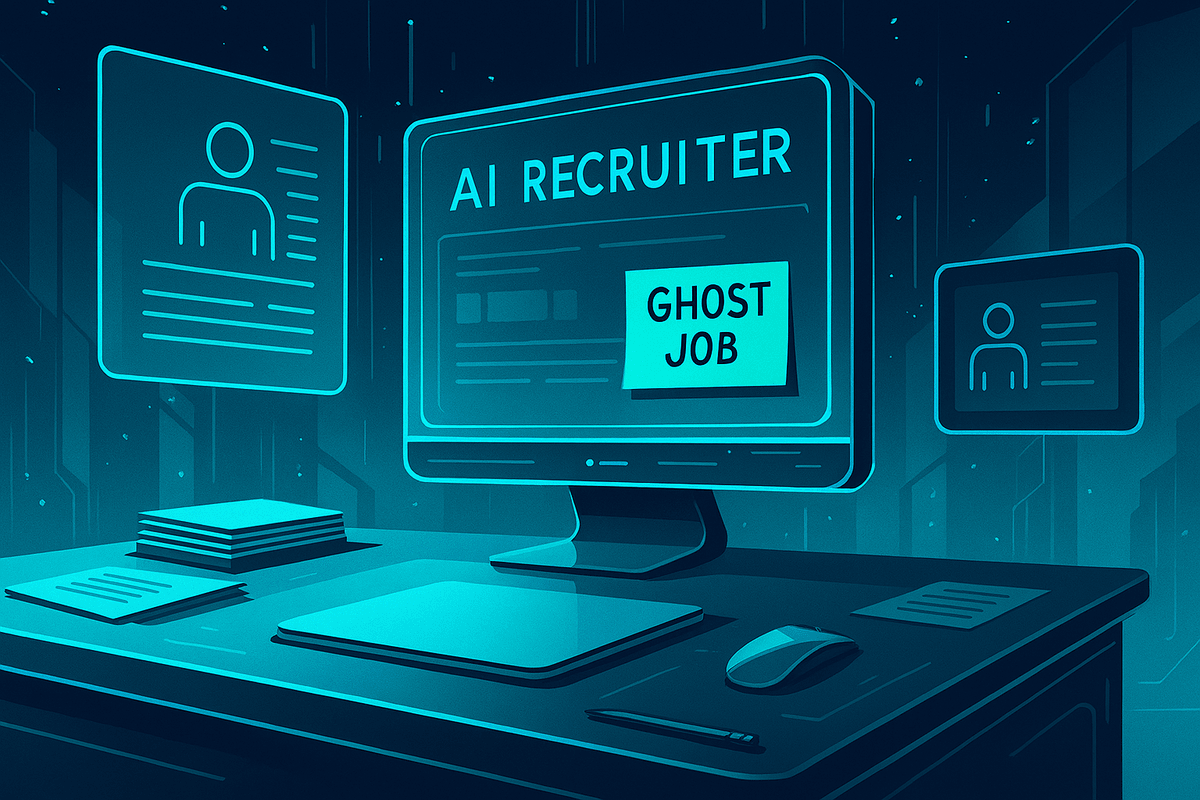In an era where algorithms scan résumés faster than a recruiter can sip their coffee, it’s time to ask: What can’t AI do—and what are we losing in the process?
🧱 The Illusion of Efficiency
AI has transformed recruitment into a numbers game. Job boards are flooded with listings, many of them ghost jobs—roles that aren’t active, aren’t real, or exist solely to pad KPIs. Recruiters increasingly rely on AI tools to scrape websites, hijack listings, and automate outreach. But when the job description is thrown at the candidate with a generic “make your résumé fit,” we have to ask:
If my résumé and conversation with you already show I can do the job, isn’t it your role to bridge the gap with the employer? If not, AI can certainly scan websites and match keywords. And if that’s all recruitment has become, the industry is at risk.
🌍 Global Applicants, Local Blind Spots
Many job applications now come from overseas candidates. But few listings clarify whether the role offers visa sponsorship. That single omission can flood inboxes with hopeful applicants who will never be eligible—wasting their time and yours.
Likewise, omitting salary ranges creates unnecessary churn. Applicants who wouldn’t accept the role are filtered after applying, when they could’ve self-filtered before. Transparency isn’t just ethical—it’s efficient. It reduces filtering workload, protects candidate dignity, and threads clarity into every listing.
⚠️ The Filter Trap: When AI Misses the Mark
AI tools often rely on brittle keyword logic and rigid formatting rules. A candidate who writes “collaborated with cross-functional teams” might be excluded because the system was trained to look for “managed interdisciplinary groups.” Same skill—different phrasing. Same capability—different syntax.
And if a résumé is formatted creatively—by a designer, a neurodivergent applicant, or someone using accessibility tools—it might be unreadable to parsing software. That’s not filtering for talent. That’s filtering for conformity.
🧪 Audit Your AI Tools
If you’re not finding the right candidates, don’t just blame the talent pool—audit your tools.
What is your system excluding?
What formatting quirks or phrasing patterns are being misread?
Are your filters tuned for clarity—or for sameness?
Recruitment isn’t just about volume. It’s about resonance. And if your tools are tuned to eliminate difference, you’re not hiring smarter—you’re hiring narrower.
🤝 The Relationship Gap
AI can screen, sort, and schedule. But it can’t build trust. It can’t sense the nuance in a candidate’s story, or thread the emotional labor required to match a person to a team. The recruiter’s true value lies in relationship-building—a skill that’s becoming dangerously scarce.
The hidden job market still exists, but AI can’t uncover it. That takes human legwork, insider knowledge, and civic clarity. If recruiters aren’t doing that work, candidates will—and recruiters become irrelevant.
🔍 What Employers Should Demand
Employers, too, must recalibrate. If your recruiter can’t articulate what makes a candidate right for you, they’re not recruiting—they’re relaying. If your roles aren’t being filled, ask whether you’re hiring—or just benchmarking.
• Are they advertising ghost jobs to pad metrics?
• Is it more cost-effective to use other tools—or recalibrate your hiring logic?
• Are you missing direct applicants who already found you—because your recruiter didn’t?
Transparency reduces filtering workload and protects candidate dignity. It also helps real employers stand out in a fog of phantom listings.
🧨 A Civic Upgrade
The recruitment industry needs a civic upgrade. One that threads emotional labor protection, platform accountability, and diagnostic clarity into every listing. AI can support that—but it can’t lead it. The human touch isn’t optional. It’s the backbone.
By Cindy, Founder of MOV ITx
We diagnose. We disrupt. We design better.
Bridging the digital gap…

